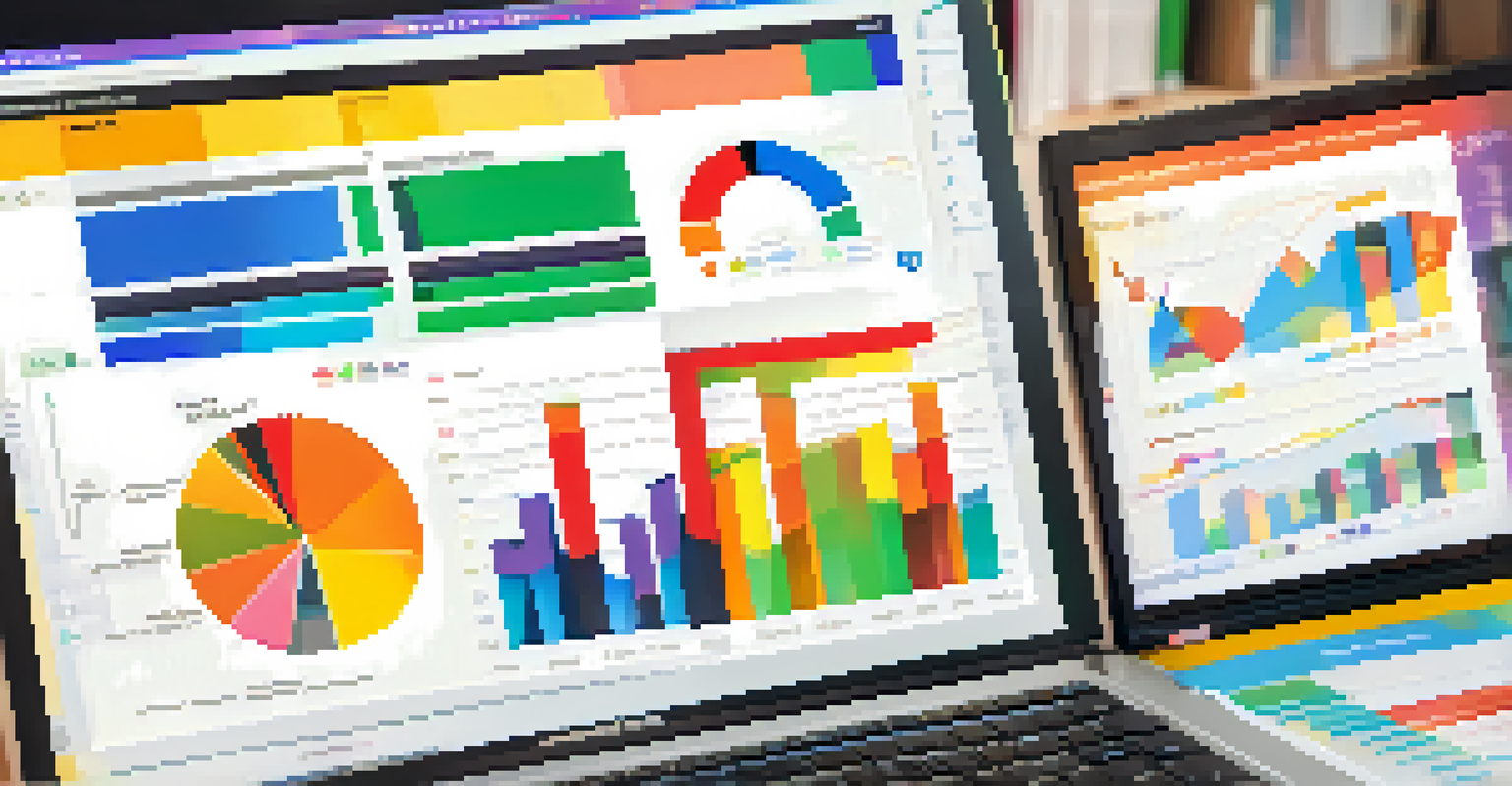How to Analyze Data from Digital Assessments Effectively

Understanding Digital Assessments and Their Importance
Digital assessments have become a cornerstone in evaluating knowledge and skills. They can provide immediate feedback and a wealth of data that can guide improvements in both teaching and learning. Understanding their significance is the first step in effective data analysis.
Data is the new oil. It's valuable, but if unrefined it cannot really be used.
These assessments can take various forms, such as quizzes, tests, or surveys, and often harness technology to streamline the process. This means data collection is not only faster but also more comprehensive. By grasping the importance of these tools, you can better appreciate the data they generate.
Recognizing how digital assessments fit into the broader educational landscape will help you make informed decisions when analyzing the data. It's not just about numbers; it's about enhancing the learning experience for everyone involved.
Collecting Data: Best Practices for Accuracy
Before diving into analysis, it's crucial to ensure that your data collection methods are sound. This involves creating clear guidelines for how assessments are administered and ensuring that all participants understand these guidelines. Accuracy in data collection lays the groundwork for meaningful insights.

Using technology can streamline this process, but it’s essential to choose tools that align with your objectives. For instance, consider platforms that offer robust analytics features to facilitate real-time data gathering. This can significantly enhance the quality of your data.
Importance of Digital Assessments
Digital assessments provide immediate feedback and valuable data to enhance teaching and learning experiences.
Remember, the goal is to collect data that reflects true performance and understanding. Regularly reviewing your data collection methods can help you identify potential biases or errors that could skew your results.
Organizing Data for Effective Analysis
Once you’ve collected your data, the next step is organization. This means categorizing data into understandable segments, whether by demographic, performance level, or subject area. Proper organization helps you see patterns and trends more clearly.
Without data, you're just another person with an opinion.
Using spreadsheets or database software can aid in this process, allowing for easy sorting and filtering. Visualizations, such as charts and graphs, can further enhance your understanding by transforming raw data into digestible formats. This way, you can spot anomalies or areas of concern quickly.
An organized dataset not only simplifies analysis but also fosters collaboration among team members. When everyone can access and interpret the data easily, it enhances the ability to make informed decisions.
Utilizing Descriptive Analytics to Gain Insights
Descriptive analytics is the process of summarizing historical data to understand what has happened in your assessments. This can include measures such as averages, percentages, and trends over time. By focusing on descriptive analytics, you can gain a clearer picture of overall performance.
For example, if a particular question consistently shows low scores, it might indicate that the material needs to be revisited or taught differently. Identifying these patterns can drive instructional changes that enhance learning outcomes.
Best Practices for Data Accuracy
Ensuring sound data collection methods is crucial for generating meaningful insights that reflect true performance.
This type of analysis is essential for setting a baseline and identifying areas of strength and weakness. Remember, the insights derived from descriptive analytics can often lead to actionable strategies for improvement.
Leveraging Inferential Analytics for Deeper Understanding
While descriptive analytics gives you a snapshot of performance, inferential analytics allows you to make predictions based on your data. This can involve statistical tests to determine whether observed patterns are statistically significant or if they occurred by chance.
For instance, you might want to know if the performance differences between two groups of students are meaningful. Inferential statistics can provide the evidence needed to make this determination, guiding future educational strategies.
By leveraging inferential analytics, you can not only understand current outcomes but also anticipate future trends. This predictive capability is invaluable when planning curriculum adjustments or targeted interventions.
Visualizing Data to Communicate Findings Effectively
Data visualization is a powerful tool for communicating your findings to stakeholders. Graphs, charts, and dashboards can transform complex datasets into visual formats that are easy to understand at a glance. This makes your insights more accessible to educators, administrators, and even students.
For example, a well-designed infographic can highlight key performance indicators and trends, making it easier for stakeholders to grasp the implications of the data. Effective visualization can foster discussions and encourage data-driven decision-making.
Visualizing Data for Clear Insights
Effective data visualization transforms complex datasets into accessible formats, facilitating better understanding and decision-making.
Remember, the goal is to tell a story with your data. A compelling visual narrative can engage your audience and inspire action, whether that’s implementing new strategies or addressing specific learning gaps.
Implementing Findings to Enhance Educational Outcomes
The ultimate goal of analyzing digital assessment data is to improve educational outcomes. Once you've derived insights from your analysis, it’s time to put those findings into action. This could involve adjusting teaching methods, refining assessments, or providing additional resources to students.
For example, if data shows that students struggle with a specific concept, targeted interventions like workshops or tutoring sessions could be beneficial. By aligning your strategies with the data, you can create a more supportive learning environment.

Implementing findings is not a one-time event but an ongoing process. Regularly revisiting your data and outcomes allows for continuous improvement and adaptation to meet the needs of your learners.